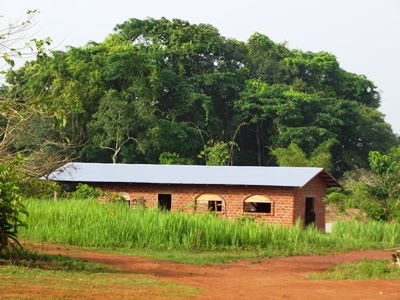This was a special week at CEFA. A group of 20 Bayaka pygmies
came for a week long seminar at Somongue. One of the reasons for the Somongue
farm, is to provide a place to train, and give hands on experience to groups
like this.
 |
Many of the lessons happened out in the field where everyone
could see and touch what was being taught.
|
 |
One of the staple foods for the Bayaka is manioc. This is a
field of high yield, and disease resistant manioc. The demonstration was on
proper spacing and planting technique.
|
 |
Knowing which side of a cutting is up is very important when
you plant a field full of them.
|
 |
One of the youngest of the group napping.
|
 |
We drained a fish pond one morning, and the whole group came
down to watch.
|
 |
| Looking at the fish |
 |
| A eel being taken out of the pond. |
 |
The Bayaka are known for their love of honey. They go to
extremes to raid wild hives to get it. So one day I got to do my first seminar on bee
keeping.
|
 |
Despite being rained out, we were able to do some activities
inside. The smoker in particular was a point of interest to them, as they use
fire to kill the bees instead of smoke to just calm or confuse them.
|
 |
Friday was all about different ways to plant. Here the
assignment was to plant a bed of okra.
|
 |
Somongue has a few hectares of improved varieties of palm
nut. This variety can have up to 13 heads of good quality nuts, compared to the
2 or 3 heads that the regular trees produce.
|
 |
An important part of gardening is in knowing how to keep a
nursery. Here every one took turns filling sacks with the right kind of soil,
and then planting in them.
|
 |
The Bayaka love to sing and dance. They showed up singing,
and left singing. During one evening, they got the drum, a few buckets, and had
a dance party. Because of low light, I was not able to get any photos of the dancing.
|
 |
Each adult to attend was given a shovel, machete, a 100
meter string, and a file for sharpening tools.
|
 |
We will see how they use these skills and ideas they have
picked up this week.
|


























